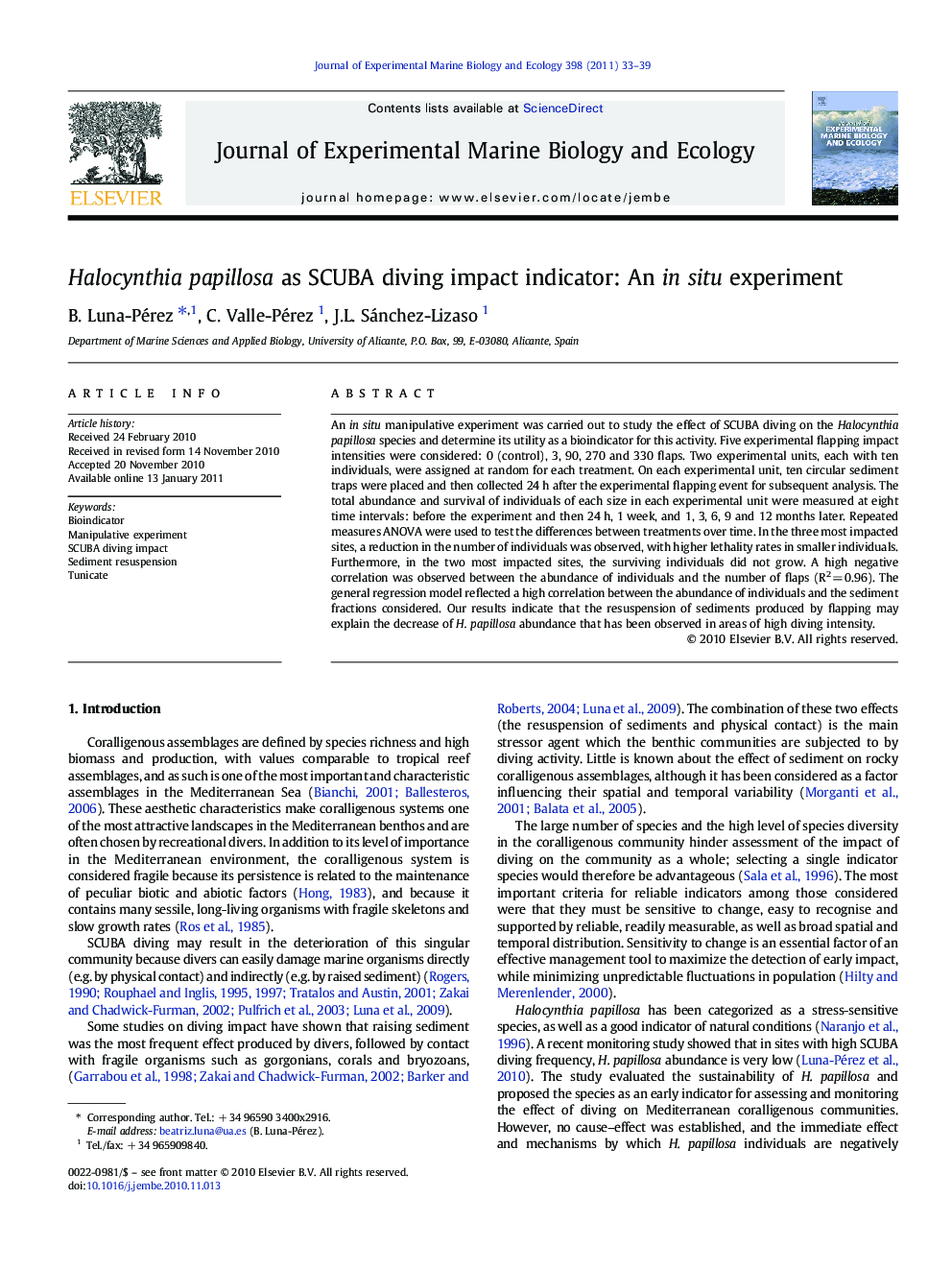| کد مقاله | کد نشریه | سال انتشار | مقاله انگلیسی | نسخه تمام متن |
|---|---|---|---|---|
| 6304553 | 1618464 | 2011 | 7 صفحه PDF | دانلود رایگان |

An in situ manipulative experiment was carried out to study the effect of SCUBA diving on the Halocynthia papillosa species and determine its utility as a bioindicator for this activity. Five experimental flapping impact intensities were considered: 0 (control), 3, 90, 270 and 330 flaps. Two experimental units, each with ten individuals, were assigned at random for each treatment. On each experimental unit, ten circular sediment traps were placed and then collected 24Â h after the experimental flapping event for subsequent analysis. The total abundance and survival of individuals of each size in each experimental unit were measured at eight time intervals: before the experiment and then 24Â h, 1Â week, and 1, 3, 6, 9 and 12Â months later. Repeated measures ANOVA were used to test the differences between treatments over time. In the three most impacted sites, a reduction in the number of individuals was observed, with higher lethality rates in smaller individuals. Furthermore, in the two most impacted sites, the surviving individuals did not grow. A high negative correlation was observed between the abundance of individuals and the number of flaps (R2Â =Â 0.96). The general regression model reflected a high correlation between the abundance of individuals and the sediment fractions considered. Our results indicate that the resuspension of sediments produced by flapping may explain the decrease of H. papillosa abundance that has been observed in areas of high diving intensity.
Research Highlights⺠Experimental determination of H. papillosa utility as SCUBA diving indicator. ⺠Response at five experimental flapping intensities was studied during one year. ⺠A reduction in the number of individuals was observed in the most impacted sites. ⺠Smaller individuals showed a higher lethality rates. ⺠A higher resuspension of sediments may explain a lower abundance in the most diving areas.
Journal: Journal of Experimental Marine Biology and Ecology - Volume 398, Issues 1â2, 28 February 2011, Pages 33-39